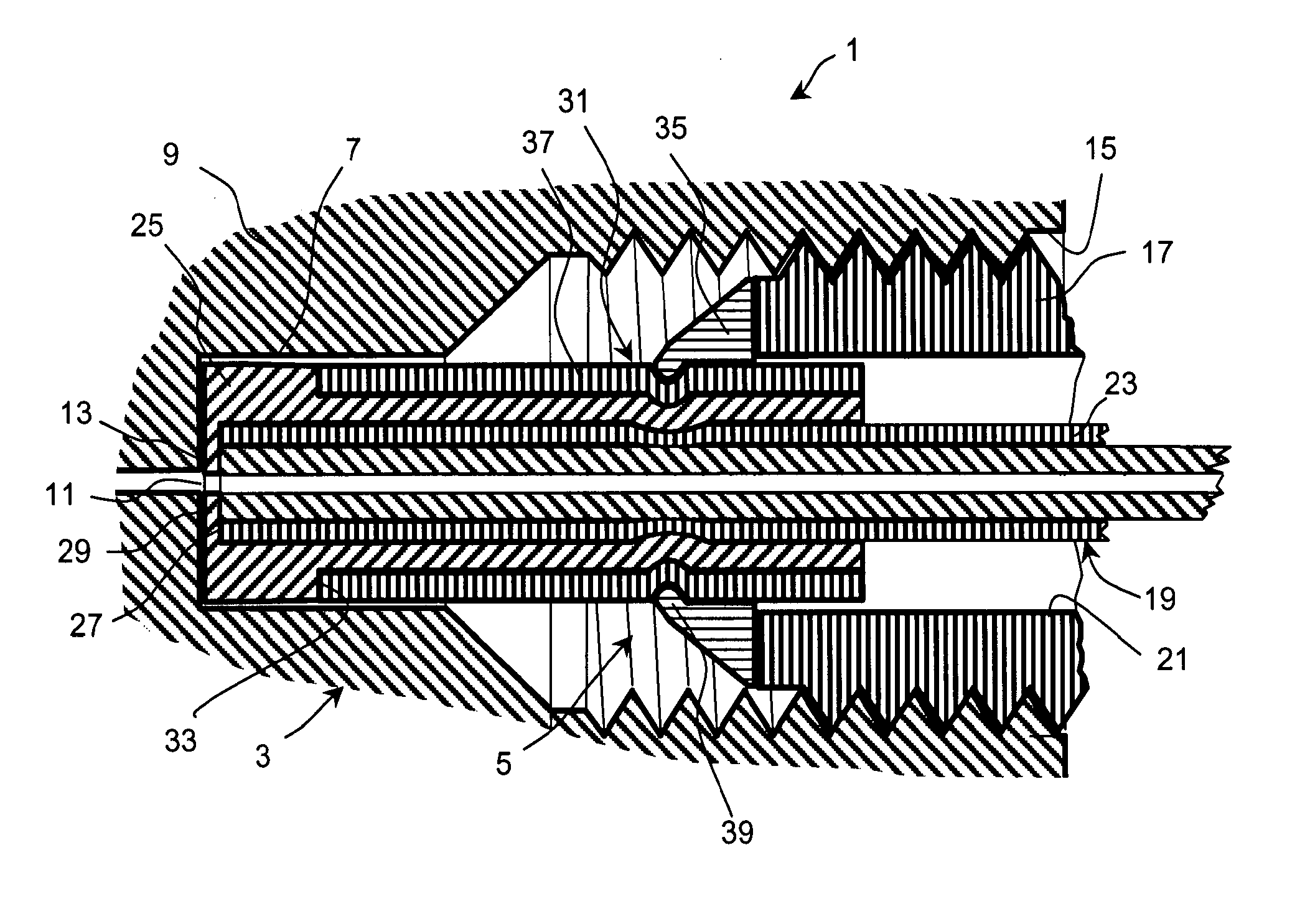Plug unit and connection system for connecting capillary tubes, especially for high-performance liquid chromatography
a technology of capillary tubes and plug units, which is applied in the direction of couplings, components, instruments, etc., can solve the problems of unsatisfactory sealing position, unsatisfactory deformation, and unfavorable deformation
- Summary
- Abstract
- Description
- Claims
- Application Information
AI Technical Summary
Benefits of technology
Problems solved by technology
Method used
Image
Examples
Embodiment Construction
[0034]The connection system 1 shown in FIG. 1 in a longitudinal section for connecting capillary tubes, especially for high-performance liquid chromatography, comprises a bushing unit 3 and a plug unit 5. The bushing unit 3 is shown with only the part that is important for understanding the present invention, namely with the bushing housing 9 having the capillary tube receptacle opening 7. The bushing housing 9 can be mounted, for example, in a component of a chromatography device, for example, a chromatography column. The bushing housing 9 has a bushing capillary tube opening 11 that is constructed centrally in the floor wall 13 of the capillary tube receptacle opening 7. The capillary tube receptacle opening 7 expands into a receptacle opening 15 for a plug housing 17 of the plug unit 5. The receptacle opening 15 is here provided on its inner wall with a thread, for example, a fine thread that interacts with a corresponding thread or fine thread on the outer wall of the plug housi...
PUM
| Property | Measurement | Unit |
|---|---|---|
| pressures | aaaaa | aaaaa |
| pressure | aaaaa | aaaaa |
| volume | aaaaa | aaaaa |
Abstract
Description
Claims
Application Information
 Login to view more
Login to view more - R&D Engineer
- R&D Manager
- IP Professional
- Industry Leading Data Capabilities
- Powerful AI technology
- Patent DNA Extraction
Browse by: Latest US Patents, China's latest patents, Technical Efficacy Thesaurus, Application Domain, Technology Topic.
© 2024 PatSnap. All rights reserved.Legal|Privacy policy|Modern Slavery Act Transparency Statement|Sitemap



